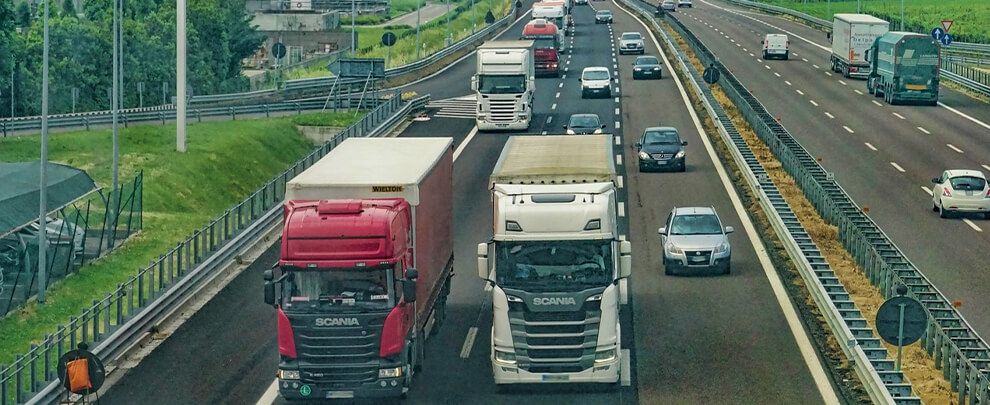Blog
Blog

What will mean the new animal welfare regulations in transport?
09th October 2024 - News
The live animal transport sector has recently highlighted the unfeasibility of the proposals contemplated in the new draft of the animal welfare regulation during transport. The document proposes, among other measures, to reduce the animal population density and limit travel hours, which, according to the sector, will not improve animal welfare and lead to a worsening of workers' working conditions and an increase in costs. We spoke with Marc Póo, the manager of the National Association of Live Animal Transporters (ANTA), to analyse the measures included in the new draft.

Marc Póo, manager of ANTA. Photo: Marc Póo.
What are the key changes proposed in the draft regulations that impact the transportation of live animals?
The draft has four key points: travel times, temperatures, densities, and the supervision of the animals' loading and unloading. The truth is that a proposal has yet to be made without consulting the sector and considering the proper functioning of the current regulations. In the last 20 years, many changes have been made to the 2005 regulations to ensure animal welfare: that the transport complies with all its requirements to ensure that the animals are in the best possible condition, that there are no injuries or casualties during transport, and so on. Let's look at the history of recent years. There are practically no casualties during transport, and we are discussing a 0.00027% casualty rate for each shipment of live animals across Europe.
Regarding the reduction of density, why do you think increasing the available space is unfeasible and harmful to animals?
We must bear in mind that, with current densities, the animals are ensured not to make physical contact with each other since the more space available between them, the greater the risk of bruising, injury or even casualties in transport. On the other hand, live animals move during transport, making driving difficult, as it harms the safety of the carrier and the rest of the vehicles. We need to consider that the truck has much power, and the more the automobile's rear moves, the higher the risk of accidents and overturning. Because of these issues, we do not agree to increase animal space. With the implementation of the new regulations, a significant reduction in densities is expected: a payload reduction of 59% is estimated for 18 kg piglets and 57% for 20 kg piglets. In addition, when temperatures exceed 30 degrees, the available space will increase by 20%. This means that, under such conditions, the payload reduction for 18 kg piglets will be 65.58%, and for 20 kg piglets, it will be 64.35%. Due to lower animal densities, we must include 2.4 additional trucks per trip to comply with regulations, significantly raising costs.
Another proposal that has generated the most opposition in Spain concerns maximum outdoor temperatures. What complications does the draft introduce to a climate akin to ours?
We must take into account the geographical situation in which we find ourselves. In Spain, and with climate change, we are between 25 and 30 ºC for almost half a year, so, according to what the draft proposes, we will have transport restrictions for six months out of the year. When temperatures are between 25 and 30 ºC, only short transfers of up to 9 hours during the day will be allowed, ensuring that the animals have continuous access to water. Once 30 ºC is exceeded, night driving will occur from 9 pm to 10 am. A study by the General Directorate of Traffic concluded that there were more fatal accidents on the road in July and August at night. On the other hand, operating at night has to be a decision of the working person; it does not have to be imposed since this involves a shift in how people live their lives. We agree that animals must be protected, but people working in the transport sector must also be protected; therefore, we must balance animal and worker welfare.
Limitations have also been proposed regarding the minimum age of the animals and the distances to be travelled. How does this affect transportation?
It will affect, for example, the transport of piglets in the Netherlands since 24-hour breaks will have to be made in stopover centres every 17 and a half hours of travel. In addition, it's important to note that the time spent loading and unloading animals is included in the total travel hours. We need to understand the need to do so as it reduces the effective hours of travel.
Despite everything, the current regulation is from 2005. Are any changes needed?
Changes have already been made. In recent years, animal welfare regulations have been updated. We understand changes being applied to things that are not working, but this is not the case. They are using this proposal to target the transportation of live animals to disrupt the meat industry.
When could the new regulations come into effect if they go ahead?
We don't know. We are currently negotiating in Europe and have successfully revised the regulations, which is incredibly important. The regulations will go ahead, as it is complicated for Europe to turn back. However, I believe that a balance can be achieved by looking at the impact it will have on the sector and looking for solutions that balance the economic part with animal welfare and that of workers. We are going to work on it. We aim to abolish the regulations, but Europe's high standards require careful consideration, so we'll check the situation in the future.
If approved under current conditions, would the sector's application of the regulations be viable?
As it is, it takes work. In the end, Europe has to be aware that it cannot paralyse a sector that is crucial for the economies of different countries. It is also true that in recent years, there has not been a good image of the livestock sector. We must invest in communication and demonstrating how the meat chain works. We have companies that are a great example in transporting live animals, for example, how they work and invest so that nothing is missing and ensure the welfare of the animals.






